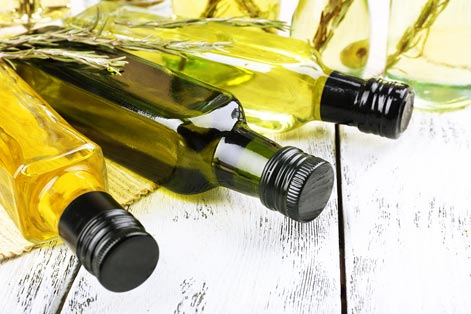Sesame Oil versus Other Oils
| Mode of Extraction | Best in cold-pressed form | Expeller and cold-pressed | Cold-pressed |
| Fat | Rich in mono-saturated fats | High in saturated fats and medium chain triglycerides | Rich in multiple unsaturated fatty acids |
| Smoke point | 160 degrees Celsius | 350 degrees Celsius | 177 degrees Celsius |
| Heat applied | Low-Medium heat | Stable-medium heat | Medium-high heat |
| Caloric Value/100 grams | 884 | 862 | 884 |
| Uses | Ideal for Mediterranean region | Great for tropical regions | Ideal for all regions |
| Benefits | Heart-healthy and has cooling properties | Fat loss, better brain function, good skin and hair | This superfood is heart-healthy, rich in antioxidants, great for skin, bones, diabetes, cholesterol, etc. |
| Flavour | Good for Mediterranean cooking | Great for South Indian cooking | Great for Indian cooking, salads, East Asian cuisine and more |
| Storage | Low temperatures | Higher temperatures | Room temperature |
| Nature | More cooling than warming properties. Recommended for correcting Pita (bile) dosha | Its cooling makes it a terrible choice for those with cough, asthma and allergies due to Kapha (phlegm) and Vata (gas) increase | Charaka Samhita Sutrasthana picks sesame over all vegetable oils for its healing and Vata balancing properties. Ideal for all regions and all uses |
Sesame Oil versus Other Oils/How oils fare – in a nutshell
Cooking requires a bit of fat for flavour and moisture. While some fats handle heat well, others don’t, and in the process lose their flavour and nutrition content. Oils with a higher smoke threshold are best for cooking purposes. Originating in the Mediterranean region, olive oil has become the preferred choice for mainly Western cuisine and salads. It is rich in monounsaturated fats and is best consumed in cold pressed form.
Coldpressed oils contain a wealth of aroma compounds and must be heated carefully to preserve their aroma compounds; otherwise, the advantage of cold pressure is lost and in some cases, it can become unfit for cooking, as in the case of olive oil. Cold-pressed oils are perfect for salads and dishes prepared at temperatures not much higher than the boiling point of water, which is generally unsuitable for cooking Indian cuisine. Eg: extra virgin olive oil, walnut oil, poppy oil and rapeseed oil. The caloric value of 100 grams of olive oil is the same as sesame oil at 884. Both oils are heart-healthy choices, but keeping the Indian tradition and condiments used in cooking, sesame oil is a better and monetarily smarter choice for cooking.
Some vegetable oils are obtained from seeds that have been toasted before pressing like sesame oil and typically have great flavour. Other examples are pumpkin seed oil, mustard oiland hemp oil. Since the seeds have been exposed to high temperatures before pressing, it’s not necessary to store the oil at low temperature.
Hot-pressed oils are cheaper because pressing yield increases with the temperature. Some oils require refinement to remove free fatty acids, solvent residues and aroma compounds. Refined oils are common in the West, on one hand because strong flavours are not popular anyway and on the other hand because they are stable enough to handle high temperatures and are great for deep frying. The thermal stability and content of multiple unsaturated fatty acids in sesame oil makes it a popular choice globally and its flavour increases its use in different cuisines.
Apart from uses in cooking, sesame oil retains its usefulness in the skincare industry and even health practitioners swear by it.

